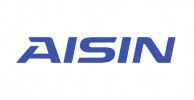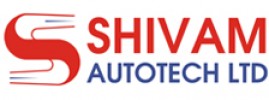Filter interviews by
Poona Forge Interview Questions and Answers
Poona Forge Interview Experiences
2 interviews found
(3 Questions)
- Q1. Forging Process Related question ask.
- Q2. Past Experience
- Q3. Education Background
- Ans.
I hold a degree in Industrial Engineering, which equips me with skills in production processes and team management.
Bachelor's degree in Industrial Engineering, focusing on production systems.
Completed coursework in Lean Manufacturing and Quality Control.
Internship experience at XYZ Manufacturing, optimizing production workflows.
Certified in Six Sigma, enhancing my ability to improve process efficiency.
I applied via Referral and was interviewed before Nov 2022. There were 3 interview rounds.

(4 Questions)
- Q1. What are various Machining process
- Ans.
Various machining processes include turning, milling, drilling, grinding, and electrical discharge machining (EDM).
Turning: Rotating a workpiece on a lathe while a cutting tool removes material
Milling: Using a rotating cutter to remove material from a workpiece
Drilling: Creating holes in a workpiece using a rotating drill bit
Grinding: Abrasive process to remove material and achieve high surface finish
Electrical Dischar...
- Q2. What is PPAP and it's document
- Ans.
PPAP stands for Production Part Approval Process, a standardized process in the automotive industry to ensure suppliers meet quality standards.
PPAP is a set of documents including forms, checklists, and other relevant information required by automotive manufacturers from suppliers.
It includes documents such as control plans, process flow diagrams, FMEA, and measurement system analysis.
PPAP is used to demonstrate that t...
- Q3. What is APQP and related documents
- Ans.
APQP stands for Advanced Product Quality Planning. It is a structured process used in the automotive industry to ensure quality and reliability of products.
APQP is a framework used in the automotive industry to plan and manage the design and production of new products.
It involves several key documents such as Control Plans, FMEA (Failure Mode and Effects Analysis), PPAP (Production Part Approval Process), and PSW (Part...
- Q4. What is GDNT and limit and fits
- Ans.
GD&T stands for Geometric Dimensioning and Tolerancing. It is a system for defining and communicating engineering tolerances.
GD&T is a symbolic language used on engineering drawings to specify the allowable variations in form, size, and orientation of features.
Limit and fits are a system of standard tolerances used to control the dimensions of mating parts. They ensure proper fit and function.
GD&T and limit and fits ar...
(2 Questions)
- Q1. What's is your previous salary
- Q2. What are previous work experience
Top trending discussions






Interview questions from similar companies

I applied via Naukri.com and was interviewed in Jul 2019. There were 3 interview rounds.
Interview Questionnaire
5 Questions
- Q1. What's process engineering works
- Ans.
Process engineering involves designing, optimizing, and managing industrial processes to improve efficiency and productivity.
Process engineering focuses on analyzing and improving processes in various industries such as manufacturing, chemical, and pharmaceutical.
It involves identifying bottlenecks, reducing waste, and implementing process improvements to enhance productivity.
Process engineers use tools like process fl...
- Q2. What's the difference between cp and pp
- Ans.
cp and pp are both commands in Unix-like operating systems, but they have different functionalities.
cp stands for 'copy' and is used to copy files or directories from one location to another.
pp stands for 'print and pause' and is used to print files with pagination, pausing after each page.
cp can be used to create a duplicate of a file or directory, while pp is used for printing files in a controlled manner.
Example: cp...
- Q3. What's control plan
- Ans.
A control plan is a documented procedure that outlines the steps and measures taken to ensure quality and consistency in a manufacturing process.
Control plans are commonly used in industries such as automotive, aerospace, and electronics.
They include details on the process steps, key characteristics, measurement methods, and acceptable tolerances.
Control plans help identify potential risks, prevent defects, and ensure ...
- Q4. What's smed
- Ans.
SMED stands for Single Minute Exchange of Die. It is a lean manufacturing technique used to reduce the time it takes to change over a production process.
SMED is used to minimize downtime during changeovers
It focuses on separating internal and external setup tasks
The goal is to convert as many internal setup tasks to external setup tasks
By reducing setup time, production flexibility and efficiency are improved
- Q5. What's capex
- Ans.
Capex stands for capital expenditure, which refers to the funds used by a company to acquire, upgrade, or maintain physical assets.
Capex is an investment made by a company to purchase or improve long-term assets such as buildings, equipment, or technology.
It is different from operational expenses (opex) which are ongoing costs to run the business.
Capex is typically planned and budgeted for in advance.
Examples of capex ...
Interview Preparation Tips
Skills evaluated in this interview

I applied via Recruitment Consulltant and was interviewed before Apr 2021. There were 3 interview rounds.

(7 Questions)
- Q1. What are your salary expectations?
- Q2. What is your family background?
- Q3. Share details of your previous job.
- Q4. Why should we hire you?
- Q5. Why are you looking for a change?
- Q6. What are your strengths and weaknesses?
- Q7. Tell me about yourself.
(2 Questions)
- Q1. As per your current profile
- Q2. Japanise Methodology like 4 M change, 5 S, IATF, OSASH, Safety, TPM, etc.
Interview Preparation Tips
salary no bar for good condidate,
answer all questions honesty because they are collect all information from your given details.

Interview Questionnaire
4 Questions
- Q1. Difference between VA & VE
- Ans.
VA is value analysis, while VE is value engineering. Both are cost-saving techniques used in product development.
VA is a systematic review of a product's components and functions to identify areas where cost can be reduced without affecting performance.
VE is a more comprehensive approach that involves rethinking the entire product design to achieve cost savings while improving performance.
VA is typically used in the ea...
- Q2. How to calculate cost of the plastic molding components
- Ans.
The cost of plastic molding components can be calculated by considering factors such as material cost, tooling cost, labor cost, and overhead cost.
Determine the material cost per unit of the component
Calculate the tooling cost, which includes the cost of the mold and any necessary equipment
Factor in the labor cost, which includes the cost of operating the molding machine and any necessary labor for finishing and assemb...
- Q3. Name some polymers
- Ans.
Polymers are large molecules made up of repeating units called monomers. They have a wide range of applications in various fields.
Polyethylene
Polypropylene
Polyvinyl chloride
Polystyrene
Polyester
Polyurethane
Nylon
Teflon
Silicone
Rubber
- Q4. System audits
Interview Preparation Tips

(1 Question)
- Q1. 5S , LINE BALACING, KAIZEN ,FMEA
Interview Preparation Tips

I applied via Referral and was interviewed in Apr 2021. There was 1 interview round.
Interview Questionnaire
3 Questions
- Q1. How mainten in company
- Q2. Company system perfectly
- Q3. My team work my responsibility
Interview Preparation Tips

(2 Questions)
- Q1. What is HPDC process
- Ans.
HPDC stands for High Pressure Die Casting, a process used to produce complex metal parts by injecting molten metal into a mold under high pressure.
HPDC involves injecting molten metal into a steel mold cavity at high pressure.
The high pressure helps in filling the mold quickly and accurately, resulting in high precision parts.
This process is commonly used in automotive, aerospace, and electronics industries for produci...
- Q2. Cost saving projects

(2 Questions)
- Q1. What is phase of APQP
- Ans.
APQP stands for Advanced Product Quality Planning, which is a phase-based approach to product development in the automotive industry.
APQP consists of five phases: Planning, Product Design, Process Design, Product and Process Validation, and Feedback and Continuous Improvement.
Each phase has specific deliverables and activities that must be completed before moving on to the next phase.
For example, in the Product Design ...
- Q2. EXPLAIN IATF AND HOW ITS WORK FOR AUTOMOTIVE INDUSTRY
- Ans.
IATF (International Automotive Task Force) is a global organization that develops and maintains quality management standards for the automotive industry.
IATF collaborates with automotive manufacturers to create unified quality standards
IATF 16949 is the latest version of the standard, focusing on continuous improvement and defect prevention
Certification to IATF standards is often required for suppliers to automotive OE...
Interview Preparation Tips
they gives 1st prefrence ref. candidate

Assistant Manager Interview Questions & Answers
Aisin Automotive Haryanaposted on 11 May 2023
I applied via Campus Placement
(3 Questions)
- Q1. Directly meet me for interview
- Q2. No questions directly meet
- Q3. No questions in my mind
Interview Preparation Tips
Poona Forge Interview FAQs
Tell us how to improve this page.
Interview Questions for Popular Designations
Overall Interview Experience Rating
based on 2 interview experiences
Difficulty level
Duration
Interview Questions from Similar Companies
Poona Forge Reviews and Ratings
based on 39 reviews
Rating in categories
|
Quality Engineer
17
salaries
| ₹1.2 L/yr - ₹4.3 L/yr |
|
Design Engineer
7
salaries
| ₹2.9 L/yr - ₹3.3 L/yr |
|
QA Engineer
7
salaries
| ₹1.6 L/yr - ₹4.6 L/yr |
|
Production Engineer
7
salaries
| ₹2.6 L/yr - ₹3.6 L/yr |
|
Assistant Manager
5
salaries
| ₹3.8 L/yr - ₹6 L/yr |

Knorr-Bremse

Sanden Vikas

Greaves Cotton

Victora Auto Private Limited
- Home >
- Interviews >
- Poona Forge Interview Questions










